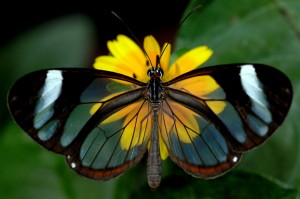I live in The Heights neighborhood of Jersey City, NJ, just west of the Hudson River from New York City. The eastern edge of the neighborhood sits atop the cliffs of the New Jersey Palisades overlooking Hoboken.

The view from The Heights is distinctly urban – buildings, roads, trains, a recycling plant. However, there’s a narrow patch of green running along the cliff that separates The Heights and the urban sprawl to the west from the eastern metropolis below. It’s too steep for humans to develop, but it seems to be a popular refuge for a surprising (and sometimes alarming) abundance of wildlife. I regularly spot teams of portly raccoons who climb the hill to rummage through trashcans in the early morning. A dense network of gnarly-looking groundhogs appear to be the volunteer landscapers for the neighborhood. And then we have the skunks, ever so many skunks. Both adorable and disquieting, our puffy neighbors commence leisurely evening waddles down the sidewalk throughout the spring and summer months, unperturbed by their terrified fellow pedestrians.


Scenarios like this are common in the suburbs, where there’s plentiful food and habitat space, but how do animals get by in these small urban patches in such densities? It has to do with their traits. Generally, animal diversity decreases from rural areas to cities because species are filtered out based on the traits that do or do not allow them to adapt to the urban environment. Bird diversity can actually spike in the suburbs, but still decreases dramatically in the urban core. Consequently, urbanization can lead to local extinctions and is a major threat to global biodiversity.

Typically, the animals and plants we see today evolved into their current form before humans altered the landscape. For some species, the urban ecosystem mimics their ancestral habitat, making these organisms pre-adapted to life in the city. A ubiquitous example is the Rock Pigeon. Pigeons are adapted to nesting and roosting on cliffs and forage on the ground for pretty much anything that resembles food. Consequently, they find ample space to nest on building ledges and a reliable food source on the streets. Animals, like the pigeon, are what scientists call “urban exploiters”. They are animals who thrive in the urban core and actually increase in abundance in the city . This classification system for organisms, popularized in a 2002 review by Michael McKinney in the journal Bioscience, also includes “urban adapters” and “urban-avoiders”, with urban adapters being more common in suburbs than the urban core, and urban avoiders being intolerant of the urban environment.

Some species that experienced past population declines due to urbanization or hunting, are now making come-backs and infiltrating even the most urban environments. Coyotes, for example, are now regular visitors to New York City.

Not long ago an elusive fisher, a forest-dwelling weasel of formidable size, was photographed wandering in the Bronx. Coyotes and fishers may be out of their element in the city, but the attraction makes sense. They are both clever, adaptable species who hunt small animals like rats and squirrels, which are abundant in the city. Whether or not these animals become a fixture in cities remains to be seen, but scientists, like the ones at The Gotham Coyote Project, are working on the answers. Now that these animals are here, it’s important to understand what attracts them to the city and how they’re getting here.

There are many different elements influencing diversity and abundance of species in cities. We may not enjoy a skunk passing us by on a city sidewalk, but the fact that they do is fascinating and speaks to the resilience of nature. Just a tiny stretch of trees in The Heights provides enough refuge for an unexpectedly diverse collection of mammals and birds who can take full advantage of the resources humans provide. Small forest corridors are enough to link coyotes and fishers to the bright lights of New York City. The questions now is whether or not life in the city is a benefit or a detriment to these animals. Raccoons, groundhogs and coyotes may not be endangered, but studying how urbanization effects them and understanding which traits make or break them in the city can give an insight into how animals deal with an ever urbanizing landscape.

